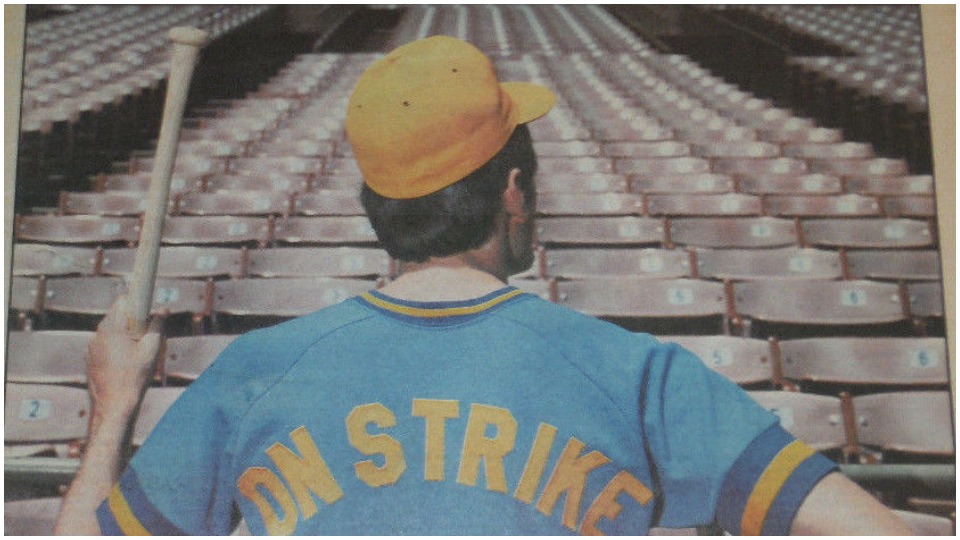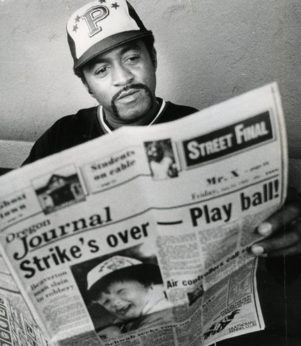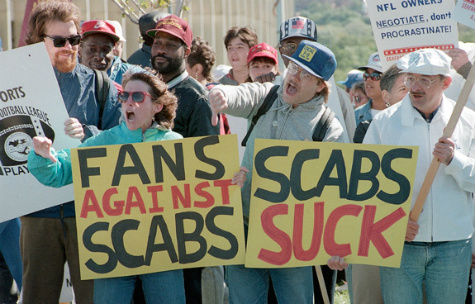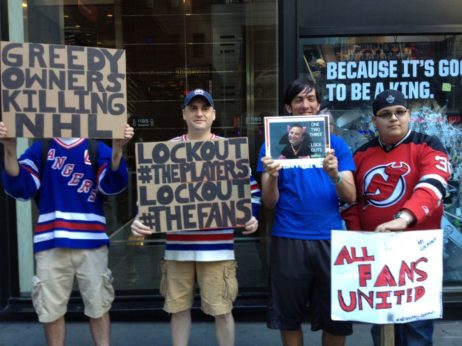
Ah… Labor Day. The one public holiday we have to celebrate and honor our labor movement, its proud history, and consistent determination fighting on behalf of all working people.
This year’s celebration will have a more personal feel for this sportswriter and all working people in the state of Missouri. Why? Because together we beat back right-to-work (Prop A).
We’ve sure as hell taken a few beatings recently, but, the spirit and determination of all working people to fight together, to fight for better workplaces, to fight against all forms of injustice, and to fight for a better nation, can never be legislated away.
Have a great three-day weekend.
From the People’s World Sports Desk,
Al Neal
Major League Baseball:
February 21, 1968: (CBA-1) The players and clubs agree to a first-ever Collective Bargaining Agreement, covering two years, effective January 1, 1968. It includes: a minimum salary increase to $10,000, an improved and standardized contract form, increases in cash allowances for incidentals such as meals and spring training, a formalized procedure for grievances (to be heard by the commissioner), and new scheduling rules.
Aril 1, 1972: (The first strike) The main issue was the players pension fund. Players wanted inflation increases, and owners saw it as a chance to break the spirit of a union that was just starting to understand the potential of a powerful—and truly unified—union. Of the 48 player reps (two per team), 47 voted to strike, and one abstained. The owners conceded after 13 days, with the realization that they were losing more money with the lost attendance than they would have to pay to meet the MLBPA’s pension demands.
1973 Lockout: Team owners locked players out of spring training starting in early February. The players stayed locked out until the owners and the MLBPA agreed on a three-year CBA, defining the salary arbitration process with a neutral arbitrator deciding between the player’s salary request and the owner’s offer. Spring training games resumed in late February, and no regular-season games were affected.

1976 Lockout: Marvin Miller, MLBPA executive director, found a weakness in MLB’s reserve clause, and in December 1975 an independent arbitrator ruled in favor of Miller and against the owners. With the ruling, pitchers Andy Messersmith and Dave McNally became free agents. Owners, furious with the decision, locked players out of spring training the first couple of weeks of March. No regular-season games were missed.
1980 Strike: The early years of free agency were tough. Players went on strike late in spring training, canceling the final eight days, and promised to strike again if a new agreement—free agency was far from the only issue—wasn’t reached by May 23. The sides came to terms on all issues except free-agent compensation, and that was enough to avoid a strike in the 1980 regular season.
1981: When an agreement on free-agent compensation was not reached, both sides dug in for a long fight. The MLBPA went on strike after games on June 11 and games didn’t resume until Aug.10. For the only time in MLB history, playoff teams were decided by first-half and second-half division champion.
1985: (The forgotten strike) An in-season strike from Aug. 6-7—games made up at the end of the season—occurred after MLB signed a huge 1983 TV deal, and dealt with issues around the pension fund and the owners’ push for a salary arbitration cap.
1994-95 Strike: (The big one) Owners were hell-bent on pushing through salary caps and busting the union’s strength and resolve. The 1994 season ended on Aug. 11 and never restarted. For the first time in American sports history, an entire postseason was canceled because of a labor dispute. Baseball didn’t start up again until April 25, 1995, when the courts found in favor of the MLPBA (thank you Justice Sonia Sotomayor).
NFL:
July 3-July 15, 1968: The NFL Players Association (NFLPA) votes to strike, and the NFL owners counter by locking out the players during training camp. The two sides come to an agreement regarding pension benefits, resulting in the first NFL collective bargaining agreement.
July 13-August 3, 1970: In response to NFL veterans being locked out of training camp, the NFLPA votes to strike. The second NFL work stoppage ends with a four-year, $19.1 million deal.
July 1-August 10, 1974: The 41-day strike ends when the veteran NFL players report to training camp without a new agreement.

September 21-November 16, 1982: The 57-day strike is over revenue sharing. Play resumes on November 21.
September 22-October 15, 1987: A 24-day strike. After the NFL players go on strike over free agency, they are supplanted by replacement players.
March 11, 2011: Negotiations to draft a new collective bargaining agreement break down. At 4:40 p.m. ET, the players’ union walks out on negotiations. The players decertify the union so that they can file a class-action antitrust lawsuit against the National Football League (Brady v NFL). Quarterbacks Tom Brady, Drew Brees, and Peyton Manning are three of 11 football players who file the lawsuit on behalf of the players against the NFL.
July 25, 2011: The NFL players unanimously vote to ratify the agreement, effectively ending the 136-day lockout.
August 4, 2011: NFL players ratify a new agreement, formally ending the labor dispute.
NBA:
July 1, 1995: NBA Commissioner David Stern announces a lockout after players reject the agreement reached by the owners and the players’ union. The players claim they weren’t fairly represented by the union. Simon Gourdine is the executive director and leader of the players’ union.
August 8, 1995: The NBA players and the owners reach an agreement.
March 23, 1998: The NBA owners vote to reopen the collective bargaining agreement, 27 to 2.
July 1, 1998: The NBA owners’ lockout the players.
January 6, 1999: The NBA players and owners reach a tentative agreement.
July 1, 2011: The NBA begins a collective lockout of its players. The lockout will continue until a new collective bargaining agreement is reached with the National Basketball Players Association (NBPA).
August 2, 2011: The NBA files two claims against the NBPA: an unfair labor practice charge before the National Labor Relations Board and a lawsuit in New York federal district court.
October 18, 2011: NBA players and owners meet with federal mediator George Cohen.
November 14, 2011: The NBA players reject the league’s latest labor proposal and announce that the union will disband and an antitrust lawsuit will be filed against the NBA.
November 15, 2011: The NBA announces that all games through December 15, a total of 324 games, are canceled. Hours later, NBA players including Carmelo Anthony and Kevin Durant, file class-action antitrust lawsuits against the NBA in at least two states.
November 26, 2011: NBA players and owners reach a tentative agreement, effectively ending the lockout. The NBA season is scheduled to begin on December 25, 2011.
December 8, 2011: The lockout officially ends when NBA players and owners ratify a 10-year collective bargaining agreement.
NHL:
April 1992: NHL players go on strike, resulting in the postponement of 30 games.
October 1, 1994-January 11, 1995: 468 games are canceled as a result of the 103-day lockout.

September 15, 2004: The existing collective bargaining agreement expires at midnight ET.
September 16, 2004: The NHL owners’ lockout the players.
February 16, 2005: The 2004-2005 hockey season is canceled due to lockout.
March 24, 2005: The 2005 NHL draft is canceled.
July 13, 2005: After more than 24 hours straight of talks, a tentative deal is reached.
July 22, 2005: The lockout ends when the NHL and the NHL Players’ Association (NHLPA) finalize a six-year collective bargaining agreement. The deal includes a team salary cap system, the main source of disagreement, with a limit on total league spending for players.
September 15, 2012: The NHL imposes a lockout at midnight ET after the collective bargaining agreement expires.
December 10, 2012: The National Hockey League announces the cancellation of the 2012-13 regular-season schedule through December 30. A total of 526 regular-season games were scheduled for October 11 through December 30.
January 6, 2013: After a 16-hour negotiating session, the National Hockey League and the NHL Players’ Association reach a tentative agreement.












Comments